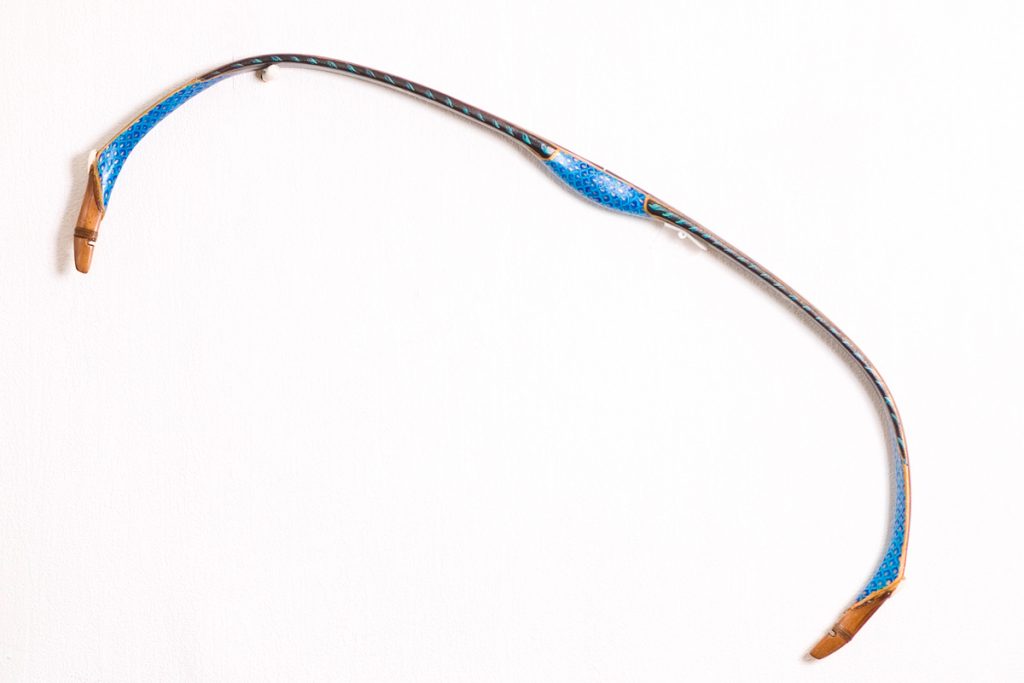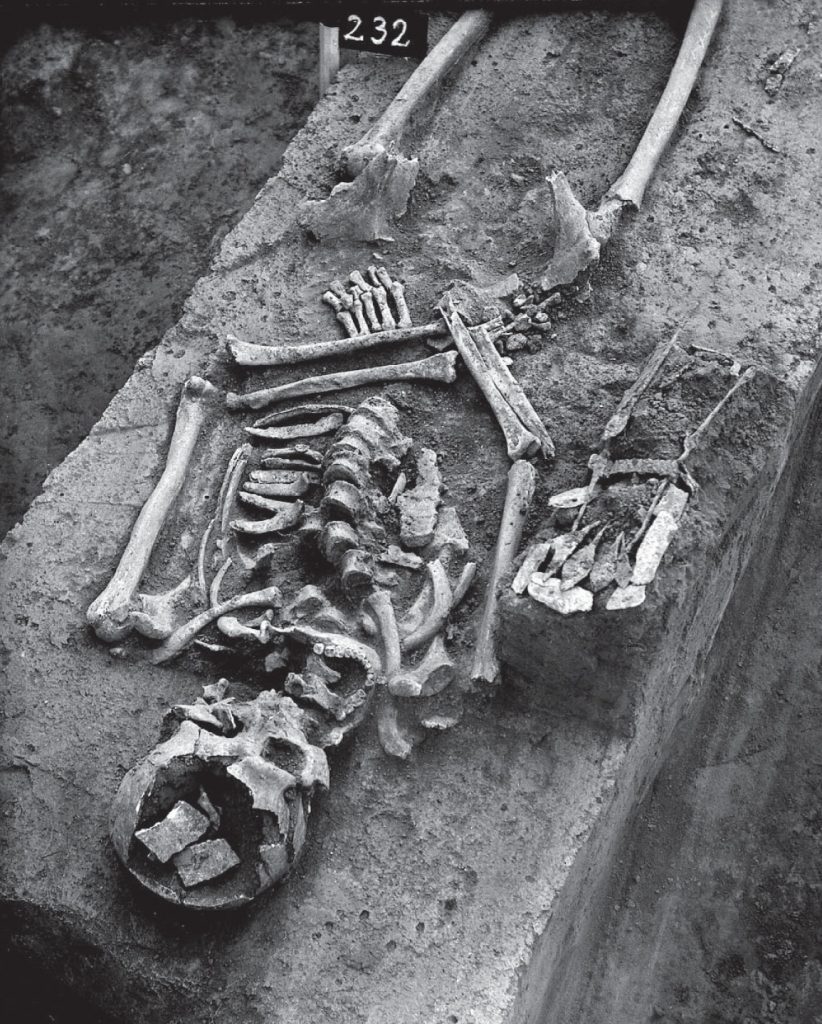THE EVOLUTION OF THE COMPOSITE RECURVE HORN-BOW
THE BOW AND ARROW WERE AMONGST THE FIRST WEAPONS USED BY HUMANITY. ONLY INFERENCES CAN BE MADE REGARDING THE EVOLUTION OF THE BOW AS ITS ORIGINS DATE SO FAR BACK IN HISTORY. A SURPRISINGLY DEVELOPED FORM OF THE BOW AND ARROW IS PERPETUATED IN THE LATE PALAEOLITHIC CAVE DRAWINGS OF SPAIN AND THE SOUTH OF FRANCE. THUS WE HAVE GOOD REASON TO BELIEVE THAT THIS FORM IS THE RESULT OF A LONG EVOLUTIONARY PROCEDURE WHICH TOOK PLACE DURING THE PALAEOLITHIC.
 Archaeologists and ethnologists presume that the bow was preceded by the throwing dart, or spear, which was developed more finely as humanity’s technological skills developed. As time wore on it was provided with a smaller arrowhead, and was made to reach its target by more and more elaborate methods.
Archaeologists and ethnologists presume that the bow was preceded by the throwing dart, or spear, which was developed more finely as humanity’s technological skills developed. As time wore on it was provided with a smaller arrowhead, and was made to reach its target by more and more elaborate methods.
One of these methods was a sort of rope looped around the butt of the dart which, when flicked, imparted a spin to the dart, improving its accuracy. Another instrument was the dart, or spear, throwing stick, which facilitated the more effective exploitation of human muscle-strength. Both ancient methods were still in use at the turning of the (20th) century in North-Eastern Asia, and North America. Another well-known example is the woomera used by Australian aboriginals down to the present day.

Opinions vary concerning the question of when and how our forefathers recognized the energy residing in the flexibility of wood and more specifically how to utilize this stored energy. It is still not obvious whether a branch, snapping back, or stringed instruments (artefacts?), which already existed at that time, triggered the idea of connecting the two ends of a flexible stick by a string. That is the idea of using the energy of a bent stick to project the arrow—originally it may have been a sort of short spear– strained against a string in order to hit a target. Another question is whether the bow was invented in one geographical area or it emerged simultaneously in various territories.
The appearance of the first bow in petroglyphs was definitely the result of a long evolutionary process. As the material of the bows was perishable, examples from very early times have not survived. Arrows too must have been carved out of wood–only their tips were hardened in fire– and they decayed over the course of tens of thousands of years. It is also possible that the early, rougher arrowheads, even if made of more resistant materials (e.g. stone), were so similar to spear-heads that it was nearly impossible to tell them apart.
In the Spanish cave drawings of the last period of the Upper Paleolithic, we can see numerous images of men with bows and arrows. Moreover, in these early representations the shape of the bow can be clearly seen as well, both in drawn and in an undrawn state.
Interestingly, the curves of some of these undrawn bows bring to mind the characteristic shape of reflex-bows.
Bows can be classified into four groups as follows:
simple (one layer, non-reflex) wooden bow
simple reflex bow
composite (multi-layered) longbow
composite (multi-layered) recurve horn bow

Simple wooden bows are still to be found among existing hunter-gatherer tribes:
African or South-Asian people of small stature (such as Bushmen, Pygmy, Semang, Sakai etc.) and amongst the jungle-dwelling indigenous people of South-America. Very similar to this is the traditional English sports bow which is also a self-bow – this is something that many of us will be familiar with from our childhood.
The category of simple reflex bows is an interesting one. Contrary to the first group, the cross-section of the bow-wood is normally tetragonal (square profile), or if it is circular it’s deeply rabbeted, that is to say, it has a groove in it.

The straight, laminated bow of the third group is to be found among the hunting people of Siberia. The first layer is usually made of a type of tough wood: birch tree, or yew; to this, a pinewood layer is glued by fish-glue. The undrawn bow is straight as a die (to maintain its straightness when not in use it is frequently tied to a straight stick). This type has a long history as well: Neolithic laminated bows from the 2nd Century BCE were found at the Serovo excavations close to Lake Baikal. Similar findings turned up from Neolithic Japanese excavations as well.
The fourth category is that of the composite recurve horn bow. Not only is it composed of more layers, but undrawn it curves exactly in the opposite direction to which it is strung. The first examples of note derive from the 2nd Millennium BC regal graves of Egypt.
Many pieces ended up in the museums of Cairo, Oxford and Berlin. Here they were, of course, analysed in detail. They consist of more layers, and they curve contrary to the direction of stringing. Their external layer is wood; it is followed by a sinew-tissue, and on the internal side facing the archer runs a bone slat. The laminated bow–partly for strengthening reasons, partly for ornamentation – is wrapped around with cherry, birch, or lime-bark. At the handle of the bow, the cross section is circular, while towards the two tips it flattens.




